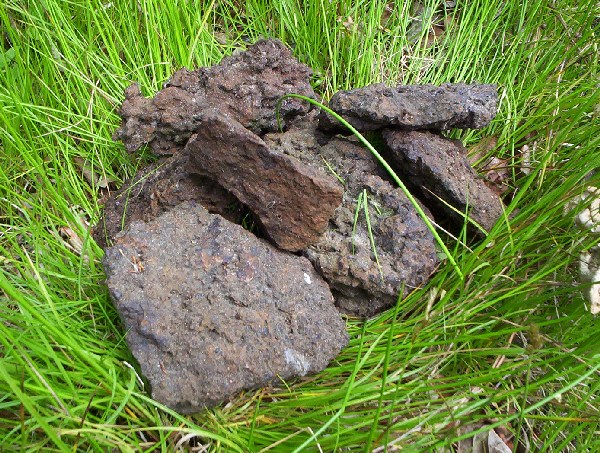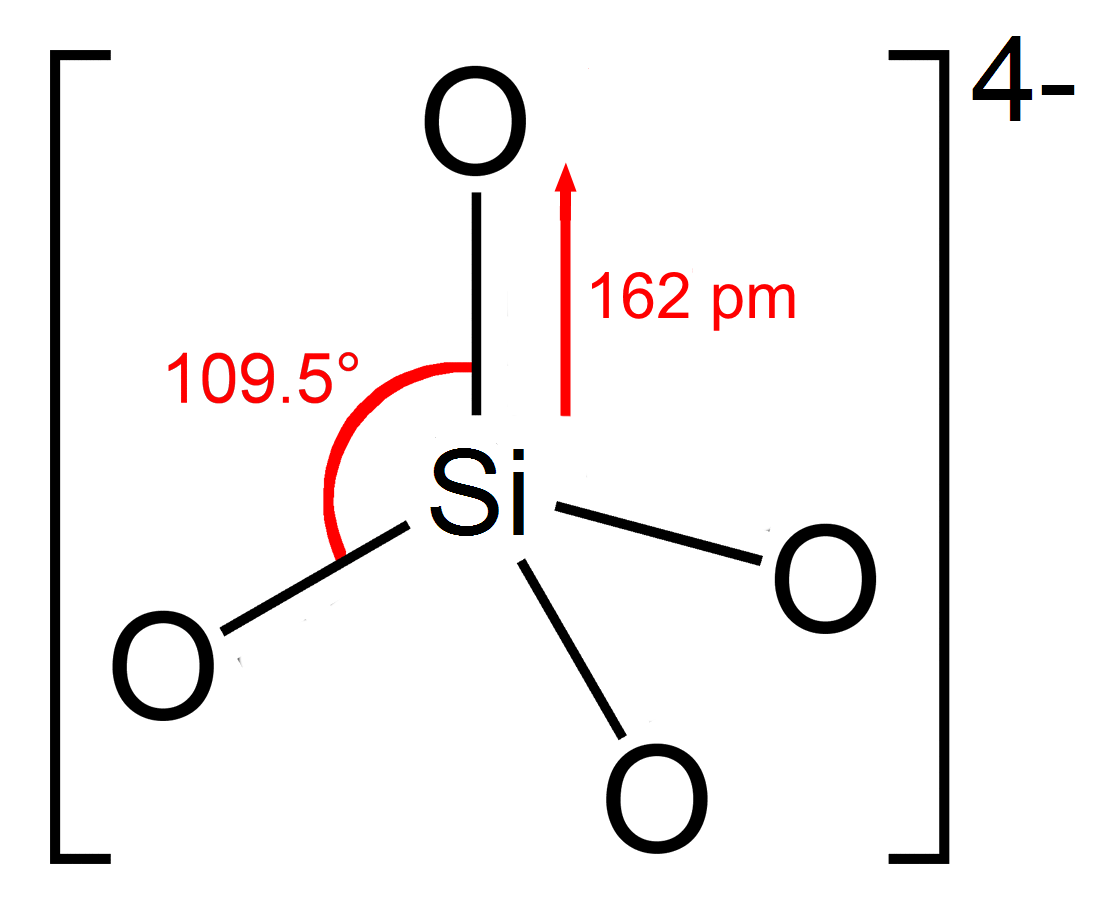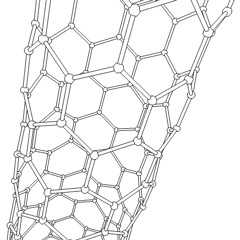|
Imogolite
Imogolite is an aluminium silicate clay mineral with the chemical formula . It occurs in soils formed from volcanic ash and was first described in 1962 for an occurrence in Uemura, Kumamoto prefecture, Kyushu Region, Japan. Its name originates from the Japanese word , which refers to the brownish yellow soil derived from volcanic ash. It occurs together with allophane, quartz, cristobalite, gibbsite, vermiculite and limonite. Imogolite consists of a network of nanotubes with an outer diameter of ca. 2 nm and an inner diameter of ca. 1 nm. The tube walls are formed by continuous (gibbsite) sheets and orthosilicate anions ( groups). Owing to its tubular structure, natural availability, and low toxicity, imogolite has potential applications in polymer composites, fuel gas storage, absorbents, and as a catalyst support in chemical catalysis Catalysis () is the increase in rate of a chemical reaction due to an added substance known as a catalyst (). Catalysts are no ... [...More Info...] [...Related Items...] OR: [Wikipedia] [Google] [Baidu] |
Clay Mineral
Clay minerals are hydrous aluminium phyllosilicates (e.g. kaolin, Al2 Si2 O5( OH)4), sometimes with variable amounts of iron, magnesium, alkali metals, alkaline earths, and other cations found on or near some planetary surfaces. Clay minerals form in the presence of water and have been important to life, and many theories of abiogenesis involve them. They are important constituents of soils, and have been useful to humans since ancient times in agriculture and manufacturing. Properties Clay is a very fine-grained geologic material that develops plasticity when wet, but becomes hard, brittle and non–plastic upon drying or firing. It is a very common material, and is the oldest known ceramic. Prehistoric humans discovered the useful properties of clay and used it for making pottery. The chemistry of clay, including its capacity to retain nutrient cations such as potassium and ammonium, is important to soil fertility. Because the individual particles in clay are less ... [...More Info...] [...Related Items...] OR: [Wikipedia] [Google] [Baidu] |
Limonite
Limonite () is an iron ore consisting of a mixture of hydrated iron(III) oxide-hydroxides in varying composition. The generic formula is frequently written as , although this is not entirely accurate as the ratio of oxide to hydroxide can vary quite widely. Limonite is one of the three principal iron ores, the others being hematite and magnetite, and has been mining, mined for the production of iron since at least 400 BC. Names Limonite is named for the Ancient Greek word ( ), meaning "wet meadow", or ( ), meaning "marshy lake", as an allusion to its occurrence as in meadows and marshes. In its brown form, it is sometimes called brown hematite or brown iron ore. Characteristics Limonite is relatively density, dense with a specific gravity varying from 2.7 to 4.3.Northrop, Stuart A. (1959) "Limonite" ''Minerals of New Mexico'' (revised edition) University of New Mexico Press, Albuquerque, New Mexico, pp. 329–333, It is usually medium to dark yellowish brown in color. T ... [...More Info...] [...Related Items...] OR: [Wikipedia] [Google] [Baidu] |
Soil
Soil, also commonly referred to as earth, is a mixture of organic matter, minerals, gases, water, and organisms that together support the life of plants and soil organisms. Some scientific definitions distinguish dirt from ''soil'' by restricting the former term specifically to displaced soil. Soil consists of a solid collection of minerals and organic matter (the soil matrix), as well as a porous phase that holds gases (the soil atmosphere) and water (the soil solution). Accordingly, soil is a three- state system of solids, liquids, and gases. Soil is a product of several factors: the influence of climate, relief (elevation, orientation, and slope of terrain), organisms, and the soil's parent materials (original minerals) interacting over time. It continually undergoes development by way of numerous physical, chemical and biological processes, which include weathering with associated erosion. Given its complexity and strong internal connectedness, soil ecologists ... [...More Info...] [...Related Items...] OR: [Wikipedia] [Google] [Baidu] |
Phyllosilicates
Silicate minerals are rock-forming minerals made up of silicate groups. They are the largest and most important class of minerals and make up approximately 90 percent of Earth's crust. In mineralogy, the crystalline forms of silica (silicon dioxide, ) are usually considered to be Silicate mineral#Tectosilicates, tectosilicates, and they are classified as such in the Dana system (75.1). However, the Nickel-Strunz system classifies them as oxide minerals (4.DA). Silica is found in nature as the mineral quartz, and its polymorphism (materials science), polymorphs. On Earth, a wide variety of silicate minerals occur in an even wider range of combinations as a result of the processes that have been forming and re-working the crust for billions of years. These processes include partial melting, crystallization, fractionation, metamorphism, weathering, and diagenesis. Living organisms also contribute to this carbonate–silicate cycle, geologic cycle. For example, a type of plankton ... [...More Info...] [...Related Items...] OR: [Wikipedia] [Google] [Baidu] |
Pedology
Pedology (from Greek: πέδον, ''pedon'', "soil"; and λόγος, ''logos'', "study") is a discipline within soil science which focuses on understanding and characterizing soil formation, evolution, and the theoretical frameworks for modeling soil bodies, often in the context of the natural environment. Pedology is often seen as one of two main branches of soil inquiry, the other being edaphology which is traditionally more agronomically oriented and focuses on how soil properties influence plant communities (natural or cultivated). In studying the fundamental phenomenology of soils, e.g. soil formation (aka pedogenesis), pedologists pay particular attention to observing soil morphology and the geographic distributions of soils, and the placement of soil bodies into larger temporal and spatial contexts. In so doing, pedologists develop systems of soil classification, soil maps, and theories for characterizing temporal and spatial interrelations among soils. There are a few ... [...More Info...] [...Related Items...] OR: [Wikipedia] [Google] [Baidu] |
Aluminium Minerals
Aluminium (or aluminum in North American English) is a chemical element; it has symbol Al and atomic number 13. It has a density lower than that of other common metals, about one-third that of steel. Aluminium has a great affinity towards oxygen, forming a protective layer of oxide on the surface when exposed to air. It visually resembles silver, both in its color and in its great ability to reflect light. It is soft, nonmagnetic, and ductile. It has one stable isotope, 27Al, which is highly abundant, making aluminium the 12th-most abundant element in the universe. The radioactivity of 26Al leads to it being used in radiometric dating. Chemically, aluminium is a post-transition metal in the boron group; as is common for the group, aluminium forms compounds primarily in the +3 oxidation state. The aluminium cation Al3+ is small and highly charged; as such, it has more polarizing power, and bonds formed by aluminium have a more covalent character. The s ... [...More Info...] [...Related Items...] OR: [Wikipedia] [Google] [Baidu] |
The American Mineralogist
''American Mineralogist: An International Journal of Earth and Planetary Materials'' is a peer-reviewed scientific journal covering the general fields of mineralogy, crystallography, geochemistry, and petrology. It is an official journal of the Mineralogical Society of America, publishing both subscription and open access articles. The journal is a hybrid open-access journal. The editors-in-chief are Hongwu Xu (Los Alamos National Laboratory), and Don Baker (McGill University). History The journal was established in 1916, with the first issue appearing in July of that year, under the auspices of the ''Philadelphia Mineralogical Society'', the ''New York Mineralogical Club'', and the ''Mineral Collectors' Association''. On December 30, 1919, the Mineralogical Society of America was formed and ''American Mineralogist'' became the society's journal. Abstracting and indexing The ''American Mineralogist'' is abstracted and indexed in Chemical Abstracts, the Science Citation Index, Ge ... [...More Info...] [...Related Items...] OR: [Wikipedia] [Google] [Baidu] |
Materials (journal)
''Materials'' is a semi-monthly peer-reviewed open access scientific journal covering materials science and engineering. It was established in 2008 and is published by MDPI. The editor-in-chief is Maryam Tabrizian (McGill University). The journal publishes reviews, regular research papers, short communications, and book reviews. There are currently hundreds of calls for submissions to special issues, a fact that has led to serious concerns. Abstracting and indexing The journal is abstracted and indexed in: According to the ''Journal Citation Reports'', the journal has a 2021 impact factor The impact factor (IF) or journal impact factor (JIF) of an academic journal is a type of journal ranking. Journals with higher impact factor values are considered more prestigious or important within their field. The Impact Factor of a journa ... of 3.748. References External links *{{Official website, http://www.mdpi.com/journal/materials Materials science journals Academic journals ... [...More Info...] [...Related Items...] OR: [Wikipedia] [Google] [Baidu] |
Catalysis
Catalysis () is the increase in rate of a chemical reaction due to an added substance known as a catalyst (). Catalysts are not consumed by the reaction and remain unchanged after it. If the reaction is rapid and the catalyst recycles quickly, very small amounts of catalyst often suffice; mixing, surface area, and temperature are important factors in reaction rate. Catalysts generally react with one or more reactants to form intermediates that subsequently give the final reaction product, in the process of regenerating the catalyst. The rate increase occurs because the catalyst allows the reaction to occur by an alternative mechanism which may be much faster than the noncatalyzed mechanism. However the noncatalyzed mechanism does remain possible, so that the total rate (catalyzed plus noncatalyzed) can only increase in the presence of the catalyst and never decrease. Catalysis may be classified as either homogeneous, whose components are dispersed in the same phase (usual ... [...More Info...] [...Related Items...] OR: [Wikipedia] [Google] [Baidu] |
Anion
An ion () is an atom or molecule with a net electrical charge. The charge of an electron is considered to be negative by convention and this charge is equal and opposite to the charge of a proton, which is considered to be positive by convention. The net charge of an ion is not zero because its total number of electrons is unequal to its total number of protons. A cation is a positively charged ion with fewer electrons than protons (e.g. K+ ( potassium ion)) while an anion is a negatively charged ion with more electrons than protons (e.g. Cl− ( chloride ion) and OH− ( hydroxide ion)). Opposite electric charges are pulled towards one another by electrostatic force, so cations and anions attract each other and readily form ionic compounds. Ions consisting of only a single atom are termed ''monatomic ions'', ''atomic ions'' or ''simple ions'', while ions consisting of two or more atoms are termed polyatomic ions or ''molecular ions''. If only a + or − is present, it indi ... [...More Info...] [...Related Items...] OR: [Wikipedia] [Google] [Baidu] |
Orthosilicate
In chemistry, orthosilicate is the anion , or any of its salts and esters. It is one of the silicate anions. It is occasionally called the silicon tetroxide anion or group.C. A. Kumins, and A. E. Gessler (1953), "Short-Cycle Syntheses of Ultramarine Blue". ''Indunstrial & Engineering Chemistry'', volume 45, issue 3, pages 567–572. Orthosilicate salts, like sodium orthosilicate, are stable, and occur widely in nature as silicate minerals, being the defining feature of the nesosilicates. Olivine, a magnesium or iron(II) orthosilicate, is the most abundant mineral in the upper mantle. The orthosilicate anion is a strong base, the conjugate base of the extremely weak orthosilicic acid (p''K''a2 = 13.2 at 25 °C). This equilibrium is difficult to study since the acid tends to decompose into a hydrated silica condensate. Structure The orthosilicate ion or group has tetrahedral shape, with one silicon atom surrounded by four oxygen atoms. In the anion, each oxyge ... [...More Info...] [...Related Items...] OR: [Wikipedia] [Google] [Baidu] |
Nanotube
A nanotube is a nanoscale cylindrical structure with a hollow core, typically composed of carbon atoms, though other materials can also form nanotubes. Carbon nanotubes (CNTs) are the most well-known and widely studied type, consisting of rolled-up sheets of graphene with diameters ranging from about 1 to tens of nanometers and lengths up to millimeters. These structures exhibit remarkable physical, chemical, and electrical properties, including high tensile strength, excellent thermal and electrical conductivity, and unique quantum effects due to their one-dimensional nature. Nanotubes can be classified into two main categories: single-walled nanotubes (SWNTs) and multi-walled nanotubes (MWNTs), each with distinct characteristics and potential applications. Since their discovery in 1991, nanotubes have been the subject of intense research and development, with promising applications in fields such as electronics, materials science, energy storage, and medicine. Types * BCN na ... [...More Info...] [...Related Items...] OR: [Wikipedia] [Google] [Baidu] |




